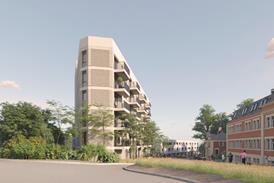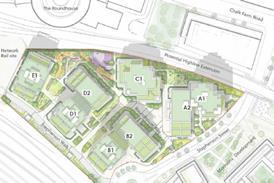Working with BIM may make a new set of demands on designers but has wider benefits, argues Eleanor Jolliffe

BIM (or more specifically Revit), is something I have been learning over the last year. I now spend more of my week on Revit than any other single activity, and, if I am honest, I am very slightly afraid that Revit will ‘learn’ me and one day I will arrive at work to find Revit is now working without me and I am surplus to requirements.
The amount of information that can be added into a BIM model is almost obscene. A colleague told me of the contractor who was designing in BIM from the moment they were appointed in order to schedule and programme the job effectively. Internet forums speak of BIM models that can predict the running costs of a building over its lifetime; and some models will apparently even predict when it is likely you will need to change light bulbs.
Of course not everyone is a fan, a single piece of software that can be used by an architect, a structural engineer, a mechanical engineer, a building operations manager and a contractor with minimal alterations to the workspace is unlikely to suit the needs of each individual profession well. To work in this collaborative way alters the way designs must be drawn. It requires modelling the entire design in 3D to a level of detail roughly equivalent to a 1:50 CAD drawing rather than focusing only on the areas of the building from which drawings will be cut. Each profession is therefore required to alter their workflow in order to accommodate this method - perhaps leading to a focus on areas of the design that may not have been that important to them previously. However, this surely gives a more thorough and comprehensive view of the building overall.
BIM is a tool, a very powerful one, but really no more autonomous or directive of design than a pen and paper
I have heard over and again how this will change and limit building design but I am sceptical of this. BIM is a tool, a very powerful one, but really no more autonomous or directive of design than a pen and paper. I imagine the same comments were made of 2D CAD when it first made an appearance. Changing to BIM can be intimidating and costly and it is all too easy to rest on our current skill set declaring it more suited to the job that needs to be done.
BIM is undoubtedly a challenge to learn and does require a shift in thinking and working. I find it harder to detail than in CAD and the amount of information needed in the early stages of a project means that these stages can be a lengthier and more resource heavy process than previously. However, problems and clashes that may have been previously missed become clear; visuals, perspectives and renders do not require a separate sketch-up model and collaborative working within the team (both project and design) theoretically becomes more straightforward as everyone is working from a single set of information in a single shared file.
BIM has altered the way I work, but I am not sure that it isn’t for the better. I have lost count of the number of times I have read or discussed the changing role of the architect in the construction industry. BIM is a different way of working that more easily translates across multiple construction roles and professions and is a powerful tool for an informed client. This seems more in line with the changes to the economy and society that the internet has brought about - one of information sharing, open-sourcing and a blurring of boundaries between different roles and specialisms.
BIM may require a shift in workflow but, as long as everyone buys into the concept, it can create a collaborative team with more access to and understanding of the information than could be imagined even ten years ago. Personally I see the industry moving in this direction, and in the architect’s traditional role of lead designer surely we should be leading the charge in mastering this new art-form otherwise there’s we risk making ourselves irrelevant.
















9 Readers' comments